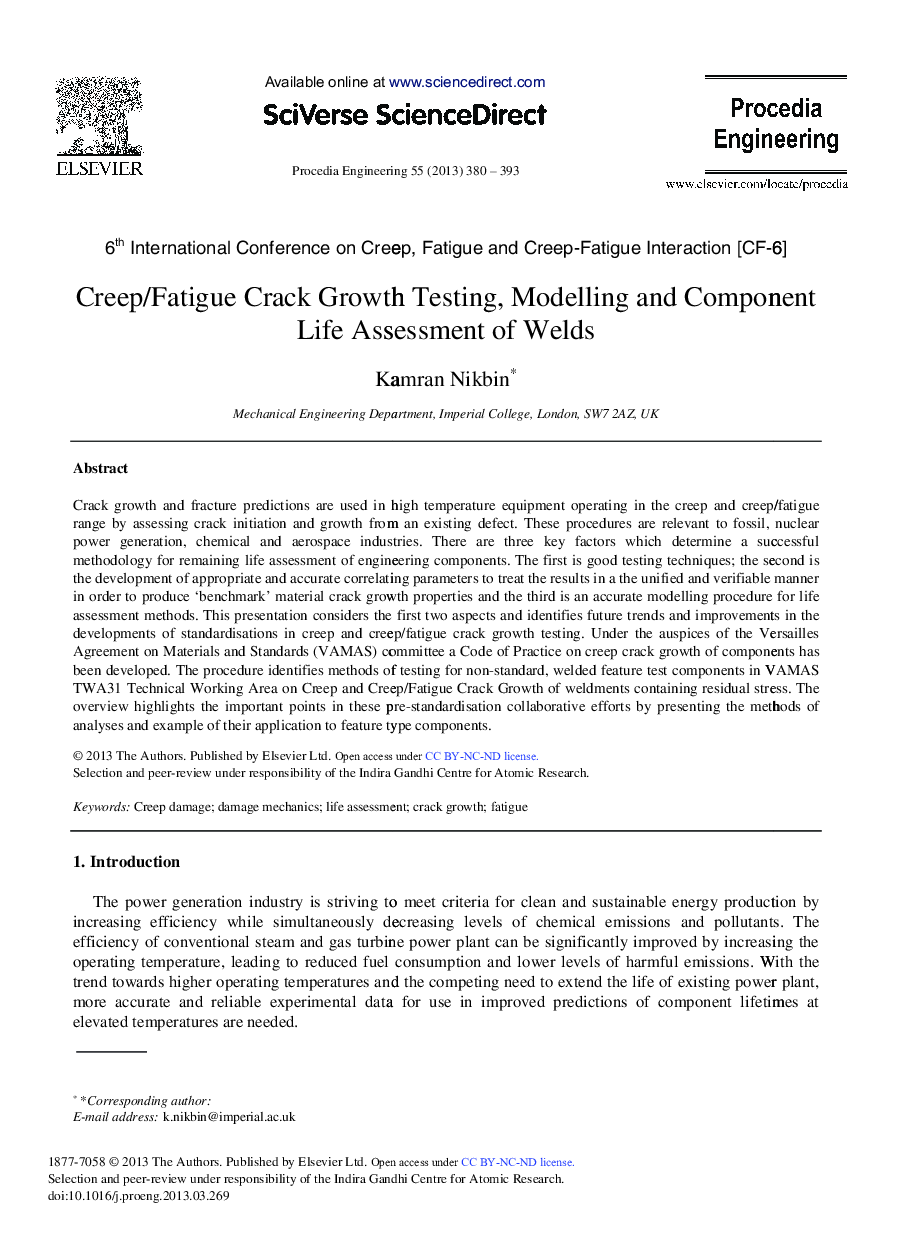| Article ID | Journal | Published Year | Pages | File Type |
|---|---|---|---|---|
| 860507 | Procedia Engineering | 2013 | 14 Pages |
Crack growth and fracture predictions are used in high temperature equipment operating in the creep and creep/fatigue range by assessing crack initiation and growth from an existing defect. These procedures are relevant to fossil, nuclear power generation, chemical and aerospace industries. There are three key factors which determine a successful methodology for remaining life assessment of engineering components. The first is good testing techniques; the second is the development of appropriate and accurate correlating parameters to treat the results in a the unified and verifiable manner in order to produce ‘benchmark’ material crack growth properties and the third is an accurate modelling procedure for life assessment methods. This presentation considers the first two aspects and identifies future trends and improvements in the developments of standardisations in creep and creep/fatigue crack growth testing. Under the auspices of the Versailles Agreement on Materials and Standards (VAMAS) committee a Code of Practice on creep crack growth of components has been developed. The procedure identifies methods of testing for non-standard, welded feature test components in VAMAS TWA31 Technical Working Area on Creep and Creep/Fatigue Crack Growth of weldments containing residual stress. The overview highlights the important points in these pre-standardisation collaborative efforts by presenting the methods of analyses and example of their application to feature type components.
